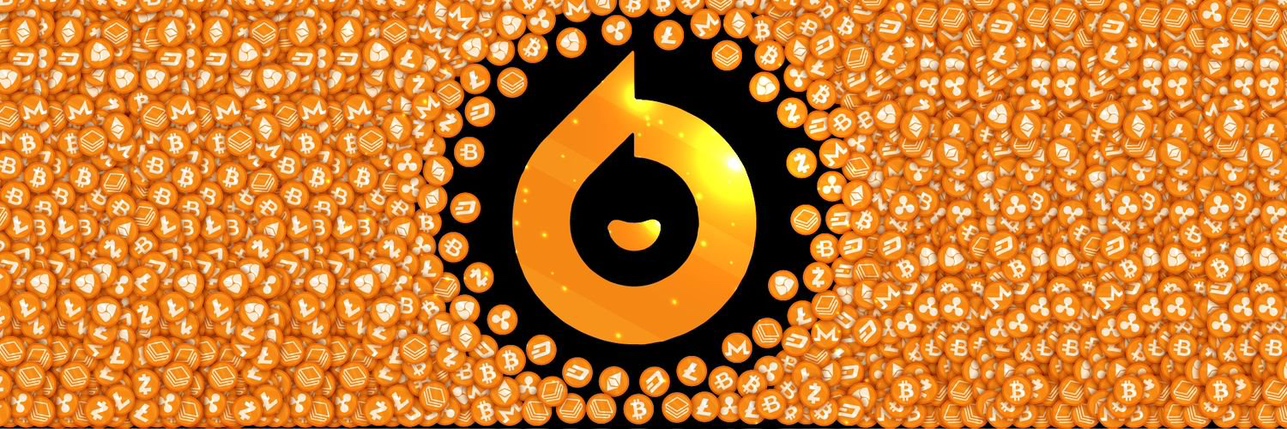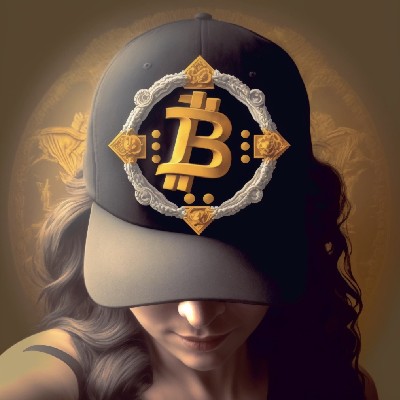VETからJPYへの交換
VeChainの市場情報
現在のVeChain価格(JPY)
VeChain (VET) は2015年に設立されたブロックチェーンプラットフォームで、主に供給チェーン管理やビジネスプロセスの最適化に分散型台帳技術を活用しています。その二重トークン経済は、VETとVTHOで構成されており、ネットワークの価値移転と取引コストを分離することを目指しており、企業向けソリューションの安定性を提供します。
VeChainの価格パフォーマンスに影響を与える要因の分析
いくつかの相互に関連する要因がVeChainの価格に影響を与えており、これらを理解することは投資家や観察者にとって重要です。
-
市場心理と広範な暗号通貨のトレンド: VeChainの価格は市場全体の心理に非常に影響されやすいです。広範な暗号通貨市場が楽観的であるとき、VETは回復する傾向がありますが、他の資産よりも遅いペースで回復することがあります。逆に、市場の恐怖が広がる時期には、VETはより急速に下落することがあります。このトークンのパフォーマンスは、一般的な暗号市場と相関することがよくあり、ビットコインの動きや全体的な市場サイクルにも影響を受けることがあります。
-
プロジェクトの発展とネットワークのアップグレード: 継続的な技術革新やVeChainThorブロックチェーンの重要なアップグレードは重要な要因です。最近のHayabusaアップグレードは2025年12月に最終化され、VeChainはプルーフ・オブ・オーソリティから委任型プルーフ・オブ・ステーク(DPoS)コンセンサスメカニズムに移行しました。このアップグレードはVTHOの生成を変更し、報酬をアクティブなステーカーに向けることで「アイドル」VTHOの供給を減少させることを目指しており、ガス・トークンに対するデフレ圧力を生む可能性があります。Galacticaアップグレード(2025年7月)や現在進行中のルネサンスアップグレードなどの他の開発は、NFTステーキング、動的手数料市場、新しいガバナンスモデルを含むもので、ネットワークのスケーラビリティ、セキュリティ、運用効率を向上させることを目的としており、新しいユーザーや開発者の誘致を図っています。
-
ユーティリティ、採用、パートナーシップ: VeChainのコアバリュー提案は、特に供給チェーン、ロジスティクス、持続可能性セクターにおける実世界のユーティリティにあります。企業による強力な採用と戦略的パートナーシップは、長期的な価値にとって極めて重要です。VeChainは、Walmart China、BMW、PwC、DNV、ボストンコンサルティンググループなどの大手企業とのコラボレーションの歴史を持ち、その技術を利用してトレーサビリティ、持続可能性の取り組み、ビジネスプロセスの管理を行っています。新しい産業(例:ヘルスケア、エネルギー、ESG)への拡張や、持続可能な行動を奨励するVeBetterDAOのようなそのエコシステムアプリケーションの成長は、VETの需要を増加させるために重要です。
-
トークノミクス: VeChainはVETとVTHOの二重トークンシステムで運営されています。VETは主要な価値移動媒体であり、ステーキング、ガバナンス、VTHOの生成に使用されます。VTHOはVeChainThorブロックチェーン上の取引手数料を支払うために使用される「ガス」トークンです。取引に使用されたVTHOの100%が焼却されるVTHO焼却メカニズムと、ステーカーにVTHO生成を集中させる新しいHayabusaトークノミクスは、希少性を生み出し、VTHOの価値を増加させる可能性があり、その結果、VETの基本的な価値を高めることができます。VETの限られた総供給(86,712,634,466トークン)は予測可能性とインフレ抵抗を提供します。
-
マクロ経済要因と規制環境: 広範なグローバル経済環境は、VeChainを含む暗号通貨市場に大きな影響を与えます。インフレ率、金利、全体的な経済成長や不況期といった要因は、投資家の行動やリスク意欲に影響を与える可能性があります。企業向けブロックチェーンソリューションに対するポジティブな規制の明確性や支援的な政策はVeChainに利益をもたらす可能性があり、逆にネガティブな規制ニュースは価格の下落を引き起こす可能性があります。より多くの機関投資家が暗号市場に参入するにつれ、伝統的金融市場と暗号通貨との相関関係が強まる可能性があります。
-
テクニカル分析: 2025年12月15日の特定のリアルタイムデータは利用できませんが、テクニカル指標は一般的に短期の価格動向に影響を与えます。移動平均収束拡大(MACD)、相対力指数(RSI)、移動平均(MA)などのツールは、トレーダーがトレンド、サポート、抵抗レベルを特定するのに役立ちます。たとえば、RSIによって示された売られすぎの条件は、潜在的な戦術的な反発を示唆する可能性があり、移動平均のクロスオーバー(例:ゴールデンクロスやデスクロス)は、強気または弱気の勢いの変化を示すことがあります。
投資家と観察者への包括的な洞察
投資家と観察者にとって、VeChainの長期的な潜在能力は、特に供給チェーンや持続可能性における実世界の企業利用の確保と拡大に依存しています。最近のHayabusaアップグレードと進行中のルネサンス開発は、その基盤技術とトークノミクスを強化するために重要であり、より強力でインセンティブのあるエコシステムの構築を目指しています。VeBetterDAOのような新しい取り組みの成功や、新しいツール(例:EVM互換性、JSON RPC)の統合を監視することは、その成長軌道に関する洞察を提供します。プロジェクト特有の要因も重要ですが、暗号市場全体のサイクルやグローバルなマクロ経済状況、規制の変化には、引き続きVETの価格パフォーマンスに大きな影響を与えるでしょう。したがって、VeChainのエコシステムと採用に関するファンダメンタル・分析と一般市場のダイナミクスの理解を融合させた全体的な視点が不可欠です。
2025年12月15日の暗号通貨市場は、重要な規制の進展、進化するマクロ経済要因、そして重要なプロジェクトの発展によって形成されたダイナミックな風景です。主要な暗号通貨が価格の統合期間を乗り越える中、基盤となるインフラは成熟を続けており、投資家にとっての課題と機会の両方を示唆しています。
価格の変動の中で明らかになる規制の明確性
2025年後半の最も明確なテーマの1つは、世界の司法管轄区域における規制の明確性の加速するペースです。米国は特に活発で、二党間の努力が包括的な枠組みを推進しています。11月、米国上院農業・栄養・林業委員会は、デジタル商品に対する商品先物取引委員会(CFTC)に新たな権限を付与することを目的とした議論草案を公表し、7月に下院が『CLARITY法案』を通過させた後のことです。この立法の推進は、SECとCFTC間の連携の強化、およびトークンの分類と保管に関する新たなガイダンスがSECとIRSから出されたことによって補完されています。
規制の風景をさらに強固にするために、ニューヨーク州知事キャシー・ホチュールは12月5日に統一商法(UCC)の改正を署名し、デジタル資産に関する財産、移転、および優先順位の規則を明確化する第12条を含めました。12月12日、通貨監督官室(OCC)は、サークルやリップルなどの著名な名前を含む5つのデジタル資産企業に対し、全国信託銀行の特許を取得するための条件付き承認を与え、伝統的な金融統合に向けた重要な一歩を示しました。同日、SECは投資家向けの通知を発行し、小口投資家に対して安全な暗号資産の保管についてアドバイスを提供し、更に伝票信託会社(DTCC)が従来の証券のトークン化を試験するための非行動書を提供しました。
大西洋を越えて、EUの暗号資産市場規制(MiCA)の実施は続いており、ホワイトペーパーのフォーマット要件(iXBRL形式を含む)は2025年12月23日から適用されます。韓国も監視を強化しており、金融サービス委員会は12月8日に、セキュリティインシデントに対する暗号交換所への無過失責任を課すルールを提案し、責任保険または準備金を義務づけることを提案しました。
これらの規制の進展にもかかわらず、広範な市場は多少のボラティリティを経験しました。ビットコインは現在約90,000ドルで取引されており、最近88,082ドルに価格が下落しました。この変動は主にマクロ経済の懸念に起因し、特に12月18日から19日までの期間に予想される日本銀行(BOJ)による利上げの可能性を巡る恐れが、資本の再移転を引き起こし、世界的な流動性を減少させる可能性があります。一方、12月初めに行われた連邦準備制度理事会の2025年の3回目の25ベーシスポイントの利下げにより、金利が3.50%~3.75%に引き下げられましたが、これが大部分は市場に織り込まれており、ビットコインに対する市場の反応は控えめでした。
主要な市場の動向とプロジェクトの開始
今日は、Cboe Global Marketsがビットコインとイーサリアムの連続先物(PBTとPET)を導入するため、規制されたデリバティブ取引にとって重要な日です。これらの新しい機器は、規制された米国の枠組み内で主要なデジタル資産への長期的なエクスポージャーを提供することを目指しており、ロール契約の必要性を回避しています。この開発は、さらなる機関参加を引き付け、市場の流動性を高めることを見込んでいます。
アルトコイン市場は、現在一連のトークン解放イベントから圧力を受けています。Bitget Newsは、Boundless(ZKC)、WalletConnectトークン(WCT)、Aster(ASTER)、およびStarkNet(STRK)を含む多数のアルトコインが2025年12月15日に重要なトークン解放を行っていると強調しています。このようなイベントは通常、流通供給を増加させ、十分な需要がない場合、価格に下押し圧力をかける可能性があります。
DeFiスペースでは、ZIGChainが本日午後2時(UTC)に重要なメインネット利回りライブストリームを主催します。このイベントでは、ZIGChainメインネット上のプロトコルが、AI駆動のトレーディングを通じたOroswap、Valdora(stZIG)によるリクイッドステーキング、Nawa Financeによる倫理的DeFi利回り、PermaPodからのRWA貸付、Zignalyによる構造化インデックス製品などのさまざまな統合を通じて、実際のユーザー利回りを生成している様子が紹介されます。これは、特に実世界資産(RWA)のトークン化と利回り生成における分散型金融の継続的な革新を強調しています。
DeFiとNFTの風景
分散型金融(DeFi)は、クロスチェーンの相互運用性の向上、流動的ステーキングプロトコルの成長、分散型取引所(DEX)や自動化マーケットメーカー(AMM)の革新に向けた重要なトレンドを示し続けています。ソラナのDeFi貸付セクターは顕著な回復力と成長を示しており、2025年12月時点でそのロックされた総価値(TVL)は36億ドルに達し、前年比33%の増加を示しています。この成長は、ソラナの効率的なインフラによるもので、低い取引コストと高い取引の最終性を提供し、個人と機関の流動性を引き付けています。
対照的に、非代替性トークン(NFT)市場は著しいスランプを経験しています。2025年11月には、世界的なNFT販売が3億2000万ドルに急落し、10月の数字の約半分となり、12月初旬には年間で最低の週次販売量が6200万ドルと記録されました。全体のNFT市場の時価総額は、1月のピークである92億ドルから31億ドルに66%減少しました。全体の下降にもかかわらず、イーサリアムベースのNFTは依然として販売でリードしていますが、ソラナは販売で44%の急増を示しており、より費用対効果の高いブロックチェーンへのユーザー活動のシフトを示しています。
Bitget取引所の発展
Bitgetは、進化する暗号の風景において革新を続ける著名なグローバル取引所です。2025年12月5日、BitgetはそのAI駆動のトレーディングアシスタントであるGetAgentの大規模なアップグレードを発表しました。この改良により、より柔軟な回答エンジン、洗練されたユーザーインターフェース、およびすべてのユーザーのための高度なAI取引ツールへのアクセスが拡大され、トレーダーにとっての分析と実行の簡素化を目指しています。さらに、Bitgetは最近、2025年の最近の決算シーズンにおいて、トークン化された米国株先物取引高が4468%の急増を記録したと報告しました。これは、トークン化された株式に対するグローバルな需要の高まりと、Bitgetがこの新しい資産クラスの促進に果たす役割を示しています。
しかし、定期的なレビューのプロセスに沿って、Bitgetはまたいくつかの上場廃止を実施しました。15のスポット取引ペアが12月12日に削除され、さらに12ペアが2025年12月19日に上場廃止予定です。
要約すると、2025年12月15日は、加速する規制枠組み、微妙なマクロ経済環境、DeFiにおける継続的な革新、困難なNFT市場、そしてBitgetのような取引所による戦略的なプラットフォームの発展に特徴付けられるクリプト市場の重要な岐路にあります。
VeChainの価格は今日上がると思いますか、下がると思いますか?
今日のVeChainの価格の他にも以下を検索できます。
VeChain(VET)の購入方法VeChain(VET)の売却方法VeChain(VET)とはVeChain(VET)を購入していたらどうなっていたでしょうか?今年、2030年、2050年のVeChain(VET)の価格予測は?VeChain(VET)の過去の価格データはどこでダウンロードできますか?本日の類似の暗号資産の価格は?暗号資産をすぐに入手したいですか?
クレジットカードで暗号資産を直接購入しよう。現物プラットフォームでさまざまな暗号資産を取引してアービトラージを行おう。VeChainの価格予測
VETの買い時はいつですか? 今は買うべきですか?それとも売るべきですか?
2026年のVETの価格はどうなる?
+5%の年間成長率に基づくと、VeChain(VET)の価格は2026年には¥1.88に達すると予想されます。今年の予想価格に基づくと、VeChainを投資して保有した場合の累積投資収益率は、2026年末には+5%に達すると予想されます。詳細については、2025年、2026年、2030〜2050年のVeChain価格予測をご覧ください。2030年のVETの価格はどうなる?
VeChain (VET)について
VeChainとは?
VeChainは、企業利用に特化して設計されたパブリックブロックチェーンプラットフォームです。分散型台帳技術(DLT)を活用することで、VeChainは、透明な情報の流れ、効率的なコラボレーション、高速な価値移転を促進する、トラストフリーの分散型ビジネスエコシステムの構築を目指しています。ルイ・ヴィトン中国の元CIOであるSunny Lu氏によって2015年に設立されたVeChainは、特にサプライチェーン業務の強化において、ブロックチェーン分野で著名なプレーヤーとなるべく急速に発展してきました。
VeChainの主な目的は、製品を追跡し、サプライチェーン全体でデータを共有するための堅牢でスケーラブルなインフラを企業に提供することです。同プラットフォームは、ブロックチェーン技術、IoTデバイス、スマートコントラクトを組み合わせて利用し、権限を付与されたすべての関係者がアクセスできるリアルタイムで不変のデータを提供します。これにより、透明性を確保し、不正を減らし、サプライチェーン業務の効率を向上させ、高級品から農業、物流、さらには政府サービスまで幅広い業界にとって価値あるツールとなっています。
関連資料
公式ドキュメント: https://www.vechain.org/whitepaper/
公式ウェブサイト: https ://www.vechain.org/
VeChainの仕組み
eChainは、VeChainThorとして知られる独自のブロックチェーンで運営されており、企業ユーザーのニーズに合わせて調整されています。VeChainThorブロックチェーンは、エネルギー効率とスケーラビリティに優れたProof of Authority(PoA)コンセンサスメカニズムを採用しています。膨大な計算能力を必要とするプルーフ・オブ・ワーク(PoW)システムとは異なり、PoAはネットワークを保護するために少数の認証バリデーターに依存しています。Authority Masternodesと呼ばれるこれらのバリデーターは、その信頼性に基づいて選択され、徹底したKYC(本人確認)プロセスを受けなければなりません。
VeChainの際立った特徴の1つは、デュアルトークンシステムです。プライマリートークンであるVeChain Token(VET)は、ネットワーク全体で価値を移転し、VeThor Token(VTHO)を生成するために使用されます。VTHOは取引手数料の支払いに利用され、それによってネットワークの利用コストを市場の投機から切り離します。このシステムは安定した取引手数料を保証し、ユーザーにVETトークンを保有するインセンティブを与え、その報酬としてVTHOを生成します。
VeChainはまた、ユーザーエクスペリエンスと企業採用を強化するために、高度なメタトランザクション機能を組み込んでいます。これには、指定口座が取引手数料を負担できる手数料委任や、ユーザーが取引の有効期限を設定できるコントロール可能な取引ライフサイクルが含まれます。さらに、このプラットフォームはマルチタスク取引をサポートしており、1回の取引で複数の支払いを処理できるほか、取引依存性もサポートしており、関連取引が完了した場合にのみ取引が実行されるようになっています。
実際のアプリケーションでは、VeChainはスマートチップ、RFID(Radio Frequency Identification)タグ、QRコードを使用して、製品のライフサイクル全体を追跡します。各段階で収集されたデータはブロックチェーンに記録され、最終消費者を含むすべての利害関係者が、製品のライフサイクルについてリアルタイムの情報にアクセスできます。この透明性は、製品の信頼性を高めるだけでなく、消費者の信頼を高め、詐欺のリスクを軽減します。
VETトークンとは?
VETはVeChainの主要トークンであり、ネットワーク内で複数の機能を果たします。VETは主にVeChainThorブロックチェーン全体で価値の保存と移転に使用されます。また、VET保有者はネットワークに影響を与える重要な決定について投票できるため、プラットフォームのガバナンスにおいて重要な役割を果たします。 VETを保有することで、ユーザーはVeThor Tokens(VTHO)を報酬として生成することもでき、これは取引手数料やスマートコントラクトの実行に使用されます。
VeChainの価格は何で決まるのか?
VeChain (VET)の価格は、市場の需給、最新ニュース、全体的な暗号資産(以下、仮想通貨)の動向など、さまざまな要因の組み合わせによって影響を受けます。企業ソリューションおよびWeb3統合向けに調整された著名なブロックチェーンプラットフォームとして、重要なパートナーシップの発表、技術の進歩、または仮想通貨規制の更新は、VETの価値に影響を与える可能性があります。これらのコンポーネントは急激な価格変動を引き起こす可能性があるため、投資家にとって仮想通貨のチャートと市場のボラティリティを監視することは非常に重要です。さらに、ブロックチェーン技術とWeb3アプリケーションが広く受け入れられることも、VeChainの市場パフォーマンスを形成する上で重要な役割を果たします。
市場センチメントと仮想通貨価格の予測もVeChainの価格に大きく影響します。2024年以降に最高の仮想通貨投資として採用されるというポジティブなニュースは、需要を押し上げる可能性があります。逆に、潜在的な仮想通貨のリスクや否定的な展開は、価格の下落につながる可能性があります。投資家は、非常に不安定な市場環境の中で十分な情報に基づいた意思決定を行うために、投資の潜在的な報酬と固有のリスクの両方を検討し、仮想通貨の価格予測と市場分析を行う必要があります。
VeChainの投資や取引に興味があり、VETの購入をお考えの方には、安全かつユーザーフレンドリーなプラットフォームを提供するBitgetなどの主要取引所がおすすめです。
VeChainの関連記事
VeChain ( VET ): Stellar パートナーシップと現実世界での有用性によりブロックチェーン産業を変革する
Bitgetインサイト




VETからJPYへの交換
VETの各種資料
VeChain(VET)のような暗号資産でできることは?
簡単入金&即時出金買って増やし、売って利益を得ようアービトラージのための現物取引ハイリスク・ハイリターンの先物取引安定した金利で受動的収入を得ようWeb3ウォレットで資産を送金しようVeChainとは?VeChainの仕組みは?
VeChainのグローバル価格
もっと購入する
よくあるご質問
Vechainは良い投資先か?
VeChainの価格予測とは?
Vechainの価値と価格を決めるものは何か?
Vechainはオープンソースか?
Vechainは中国の通貨?
VeChainの特徴は?
VeChainの価格に影響を与える要因は何ですか?
VeChainはどこで購入できますか?
VeChainの現在の価格はいくらですか?
VeChainは将来的に価格が上昇することが期待されていますか?
VeChainの過去最高価格は何ですか?
VeChainは、価格の点で他の暗号通貨とどのように比較されますか?
2025年のVeChainの価格予測は何ですか?
VeChainの価格を追跡するにはどうすればよいですか?
Bitget取引所でのVeChainの取引ペアは何ですか?
VeChainは主要な市場の下落の影響を受けたことがありますか?
VeChainの現在の価格はいくらですか?
VeChainの24時間取引量は?
VeChainの過去最高値はいくらですか?
BitgetでVeChainを購入できますか?
VeChainに投資して安定した収入を得ることはできますか?
VeChainを最も安く購入できるのはどこですか?
今日の暗号資産価格
Bitgetに新規上場された通貨の価格
注目のキャンペーン
VeChain(VET)はどこで買えますか?
動画セクション - 素早く認証を終えて、素早く取引へ










